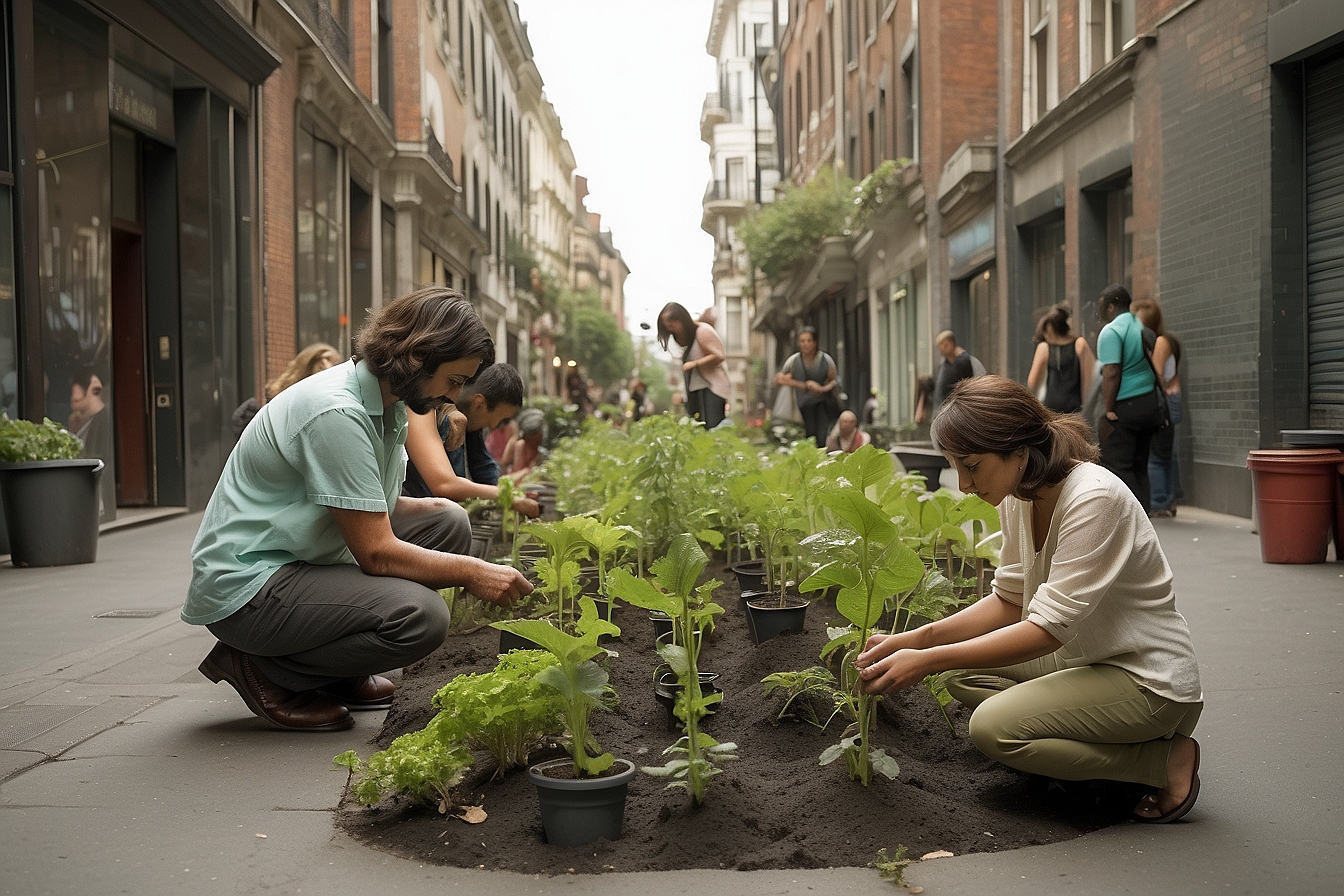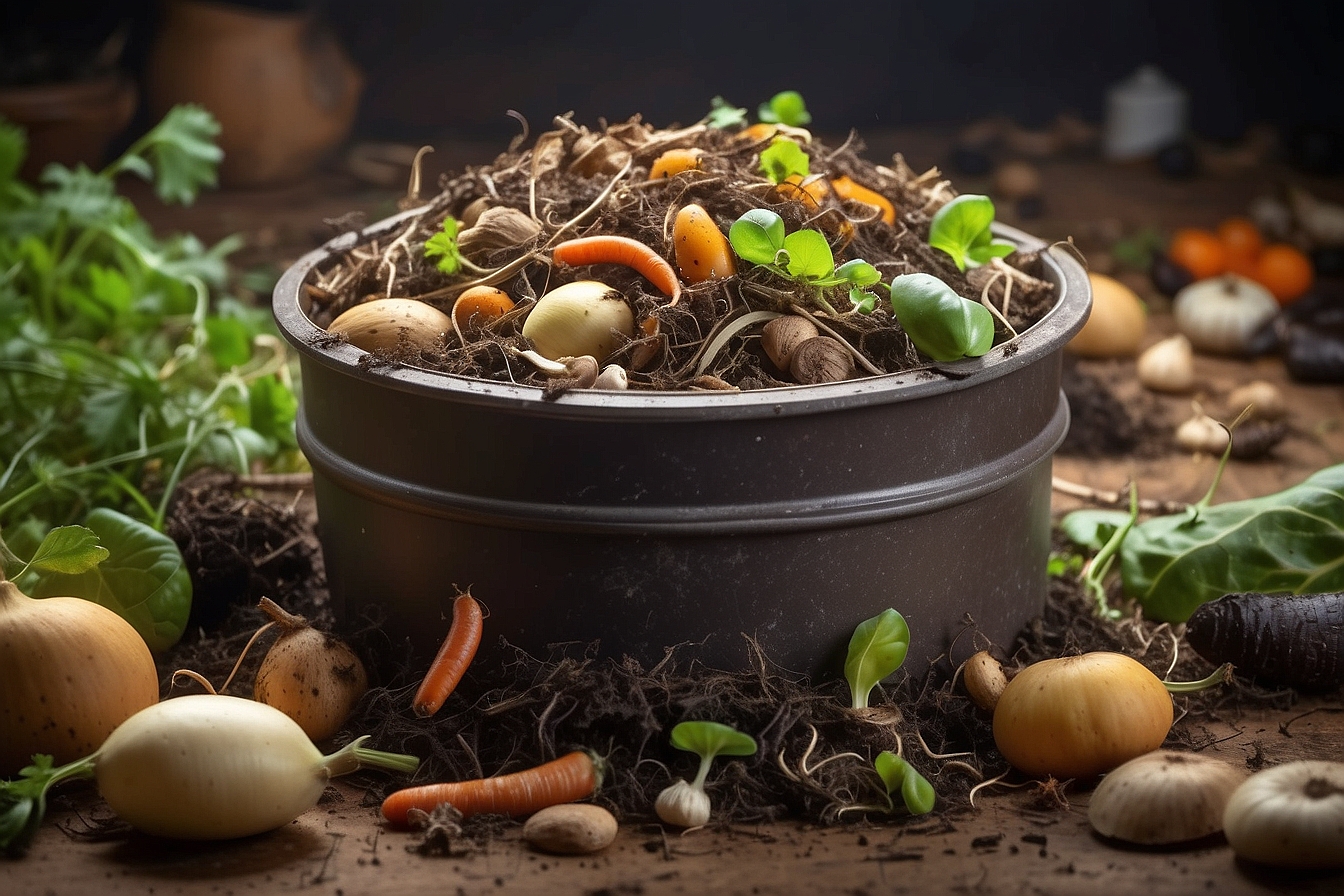With ever-climbing water bills and the spectre of droughts looming large, it’s fair to say that concerns over our household water usage weigh heavily on many a mind. Indeed, we’re in the same boat – having wrestled with these very issues ourselves – only to find something rather eye-opening: an average rooftop can collect approximately 85,000 litres of rainwater each year.
That’s a bounty simply too precious to let go down the drain.
Our guide delves deep into the realm of rainwater harvesting; presenting it as a practical solution for safeguarding your little haven at home against water scarcity. Do stay with us; together we’ll learn how every single drop can play its part!
Key Takeaways
- Rainwater harvesting involves collecting and storing rain for future use, with an average rooftop capable of gathering around 85,000 litres annually.
- Benefits include water conservation, reduced utility bills due to decreased reliance on municipal water, enhanced drought resistance, and improved local water quality.
- Practical applications for harvested rainwater extend to flushing toilets, doing laundry indoors; watering plants and washing cars outdoors. After suitable treatment, it can even become a source of drinking water.
- Implementing rainwater harvesting requires setting up systems like rain barrels or more complex storage solutions. Measures should be taken to ensure efficient collection while adhering to plumbing codes and regulations.
- Eco – friendly landscape designs such as permeable surfaces and green roofs can further maximise the benefits of collected rainwater in domestic settings.
What is Rainwater Harvesting?
Rainwater harvesting captures, collects, and stores rain for later use. We gather water from surfaces like rooftops and direct it into tanks or reservoirs. Through this process, we make the most of every rainfall, turning what would otherwise be lost runoff into a valuable water resource.
Our actions play a crucial role in sustainable living by reducing demand on urban water supply systems. By using simple tools such as rain barrels or designing more complex rainwater storage solutions, we ensure that every drop of precious rain is not wasted.
This ecofriendly practice contributes to environmental sustainability and promotes efficient water management within our communities.
Benefits of Rainwater Harvesting
Rainwater harvesting offers numerous benefits, including water conservation, cost savings, reduced reliance on municipal water, and improved water quality. Implemeting rainwater harvesting at home helps to alleviate the strain on local water supplies and supports environmentally sustainable practices.
Water conservation
Water conservation plays a crucial role in sustainable water use. By harvesting rainwater, we reduce our reliance on municipal water sources and help alleviate the strain on local water supplies.
Implementing simple techniques like using rain barrels or creating a complete rainwater collection system allows us to collect and store rainwater for various household uses, effectively reducing our overall water consumption.
By incorporating rainwater harvesting into our homes, we actively contribute to eco-friendly practices while promoting water efficiency and sustainability. This not only benefits the environment but also helps in mitigating drought resistance by ensuring an alternative source of water during dry spells.
Cost savings
Implementing rainwater harvesting at home can lead to significant cost savings for environmentally conscious individuals looking to support water conservation efforts. By using collected rainwater for activities such as watering plants, doing laundry, or flushing toilets, households can reduce their dependency on municipal water supply, resulting in lower utility bills.
Additionally, by investing in a rainwater collection system or rain barrels, families can mitigate the impact of droughts and water shortages on their budget while contributing to sustainable water usage practices within their community.
Reduced reliance on municipal water
By harvesting rainwater, we can reduce our reliance on municipal water sources. This helps to alleviate the strain on local water supplies and ensures that vital resources are available for other essential needs.
Utilising collected rainwater for household use promotes self-sufficiency and contributes to sustainable water management.
Implementing rainwater harvesting systems allows us to take a proactive approach towards water conservation. By doing so, we play an active role in safeguarding our environment and securing future water security for our communities.
Improved water quality
By reducing reliance on municipal water, rainwater harvesting can significantly improve water quality in our homes. When we collect and use rainwater for household purposes, we decrease the demand for treated water from public utilities, thus lessening the strain on their resources.
As a result, this minimises the need for chemical treatment and distribution processes that can compromise water purity. Utilising harvested rainwater contributes to enhanced overall water quality as it reduces pollution from stormwater runoff entering natural bodies of water.
Incorporating rainwater harvesting into our eco-friendly practices not only benefits us personally but also supports conservation and environmental sustainability within our communities.
How to Harvest Rainwater
There are several methods for harvesting rainwater, including using rain barrels or creating a complete rainwater collection system. These methods can help to efficiently collect and store rainwater for household use.
Different methods
Rainwater harvesting can be done using various methods, each suitable for different environments and needs. Here are some effective ways to harvest rainwater:
- Rain Barrels: These containers collect rainwater from the roof via a downpipe and store it for later use, such as watering plants or washing outdoor areas.
- Rooftop Collection: Installing gutters and downspouts on the roof to direct rainwater into a storage tank or cistern for use in flushing toilets or laundry.
- In-Ground Storage: Creating a system of pipes and filters to channel rainwater from surfaces into an underground storage tank, providing a clean and secure water source.
- Green Roofs: Using vegetation on rooftops to absorb and store rainwater, reducing runoff and providing insulation benefits.
- Permeable Paving: Employing porous materials for driveways or walkways that allow rainwater to filter through and be stored below for future use.
- Flood Irrigation: Redirecting excess rainwater into plant beds or garden areas for natural irrigation, reducing the strain on sewer systems while benefiting plants.
- Rain Gardens: Landscaping features designed to capture and absorb rainwater runoff, helping recharge groundwater and reducing erosion.
Using rain barrels
Rain barrels are an economical and eco-friendly way to collect rainwater. They can be placed under downspouts to capture rain from your roof. The collected rainwater can then be used for various purposes around the house. Here are some tips for using rain barrels:
- Place the rain barrel on a stable, level surface.
- Ensure the lid is secure to prevent debris and mosquitoes from entering.
- Use a screen over the opening to filter out leaves and other debris.
- Install an overflow hose to redirect excess water away from your foundation.
- Regularly inspect the barrel for leaks and cracks.
Creating a complete rainwater collection system
To create a complete rainwater collection system, start by installing gutters and downspouts on your roof to direct rainwater into storage containers. Then, choose suitable storage containers such as rain barrels or larger tanks that can hold the collected water. Ensure the containers are properly sealed to prevent contamination and evaporation. Next, consider implementing a filtration system to remove debris and impurities from the collected rainwater. Additionally, integrate a pump system for easy distribution of the harvested water for various household uses. Finally, regularly maintain and inspect the collection system to ensure its effectiveness in capturing and storing rainwater.
Uses of Collected Rainwater
Collected rainwater can be used for various purposes, including indoor use such as flushing toilets and doing laundry, as well as outdoor use like watering plants and washing cars.
With proper filtration and treatment, it can also be suitable for drinking.
Indoor use
Indoor use of collected rainwater can significantly reduce your household’s reliance on municipal water. By installing a filtration system, the stored rainwater becomes suitable for various indoor purposes such as flushing toilets, washing clothes and dishes, and even bathing.
Transitioning to rainwater for these activities conserves potable water and reduces utility costs, contributing to overall eco-friendly water usage practices in the home.
Implementing rainwater harvesting indoors aligns with sustainable living principles while promoting water sustainability within the community. It allows us to actively participate in stormwater management and reclamation efforts at a domestic level, supporting conservation and environmental initiatives through practical applications of greywater usage.
Outdoor use
Outdoor use of harvested rainwater provides an excellent eco-friendly solution for maintaining gardens, lawns, and outdoor plants. Utilising collected rainwater for watering outdoor spaces reduces reliance on municipal water sources and contributes to overall water conservation efforts.
By implementing simple systems like rain barrels or larger-scale collection methods, environmentally conscious individuals can easily access stored rainwater to maintain their outdoor landscape in a sustainable manner.
Proper filtration also allows for the use of harvested rainwater for car washing and cleaning exterior surfaces without compromising environmental values.
Incorporating these practices into our daily lives not only promotes eco-friendly water usage but also supports the effort to conserve natural resources, making significant contributions to our environment while enjoying the benefits of self-sufficiency in managing household water needs.
Drinking water (with proper filtration)
When using rainwater for drinking, it is essential to ensure proper filtration. This involves installing a multi-stage filtration system that removes impurities and contaminants from the collected rainwater, making it safe for consumption.
By incorporating UV sterilisation or reverse osmosis systems into your filtration process, you can further enhance the quality of the harvested rainwater, providing your household with a sustainable source of clean drinking water.
Utilising rainwater for drinking purposes not only reduces reliance on municipal water but also contributes to overall water conservation efforts. Filtering collected rainwater allows environmentally conscious individuals to embrace eco-friendly practices while ensuring a fresh supply of potable water for their households.
Tips for Incorporating Rainwater Harvesting into Your Home
Design your landscapes to effectively manage and store rainwater, properly harvest runoff, collect and store rainwater in barrels or tanks, install a gutter system, and make sure to meet plumbing codes and regulations.
Read on to learn more about how you can incorporate rainwater harvesting into your home!
Designing landscapes to manage and store rainwater
When designing landscapes to manage and store rainwater, we should consider the following:
- Implementing swales and berms to channel water into specific areas of the landscape where it can be stored.
- Incorporating permeable surfaces such as gravel or pervious pavers to allow rainwater to seep into the ground instead of running off.
- Planting native vegetation with deep roots to absorb and utilise rainwater effectively.
- Creating rain gardens in low-lying areas to collect and store rainwater for plant use.
- Using mulch to retain moisture in the soil and reduce water runoff.
- Installing a cistern or underground storage tank to collect rainwater from gutters for later use.
Properly harvesting runoff
After managing and storing rainwater in your landscape, properly harvesting runoff is crucial for maximising your water conservation efforts. Here are some essential tips for effectively harvesting runoff:
- Ensure the slope of your landscape directs water towards collection points such as rain barrels or storage systems.
- Implement swales and berms to control and slow down the flow of runoff, allowing it to infiltrate the soil and replenish groundwater.
- Use permeable surfaces like gravel or pavers to reduce surface runoff and facilitate water absorption.
- Install gutter guards to prevent debris from clogging gutters and obstructing the flow of rainwater into storage containers.
- Consider using a first flush diverter to redirect the initial flow of rainwater, which may contain pollutants from roofs or surfaces, away from your collection system.
Rainwater collection and storage
To collect and store rainwater effectively, consider the following tips:
- Use a storage system with an adequate capacity to hold the collected rainwater.
- Ensure the storage container is tightly sealed to prevent contamination and evaporation.
- Regularly maintain and clean the storage system to ensure water quality.
- Install a filter system to remove debris and impurities from the collected rainwater.
- Utilise a pump system if needed for distributing the stored rainwater throughout your household.
- Select appropriate materials for your storage containers, such as food – grade plastic or stainless steel, to maintain water quality.
Installing a gutter system
To install a gutter system for rainwater harvesting, follow these steps:
- Choose high – quality, durable gutters that are compatible with your home’s architecture and can withstand heavy rainfall.
- Position the gutters strategically to capture maximum water flow from the roof, directing it towards downspouts.
- Ensure the downspouts are clear of debris and direct water into a rain barrel or storage tank.
- Regularly maintain and clean the gutters to prevent blockages and ensure efficient water flow.
- Consider adding leaf guards to reduce the accumulation of debris in the gutters without obstructing water flow.
Meeting plumbing codes and regulations
To meet plumbing codes and regulations, it is important to consult with local authorities or a qualified plumber. It ensures that the rainwater harvesting system complies with legal requirements and safety standards. Here are some tips for incorporating rainwater harvesting into your home while meeting plumbing codes and regulations:
- Obtain necessary permits from local authorities before installing a rainwater harvesting system.
- Ensure that the system is integrated with the existing plumbing in compliance with building regulations.
- Regularly inspect and maintain the system to prevent any potential health hazards or contamination of the stored rainwater.
- Use proper filtration systems to ensure that the collected rainwater meets safety standards for various household uses.
- Incorporate backflow prevention devices to prevent contamination of potable water sources.
- Install overflow devices to direct excess water away from structures, preventing flooding and property damage.
- Follow guidelines on cross – connection control to prevent unintentional mixing of potable water with harvested rainwater.
Conclusion
In conclusion, rainwater harvesting offers a sustainable and cost-effective solution for household water needs. With proper filtration, collected rainwater can be used for various purposes, reducing reliance on municipal water.
By incorporating simple methods into our homes, we can contribute to water conservation and eco-friendly practices. Let’s embrace rainwater harvesting as an essential part of responsible water management for a greener future.
FAQs
1. What is rainwater harvesting for household use?
Rainwater harvesting for household use involves collecting and storing rain to recycle it for daily activities like gardening or flushing toilets, supporting ecofriendly water usage.
2. How does a water storage solution for rainwater work?
A water storage solution includes a system that catches rain from your roof, guides it through filters into a tank where the water is saved and then used when needed.
3. Can I use harvested rainwater for all my home needs?
While you can harvest and store rainfall, it’s best suited for non-drinking purposes unless properly treated; using it helps in reducing demand on traditional water supply systems.
4. Is setting up a system to collect and recycle rain complex?
No, installing a basic rainwater collection setup is straightforward, offering an ecofriendly practice to reclaim and repurpose natural resources efficiently within your own home.





